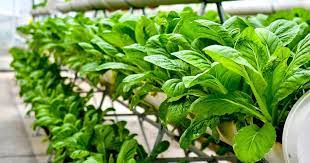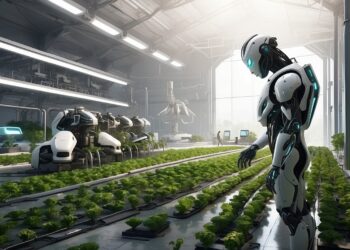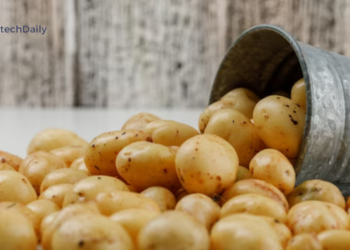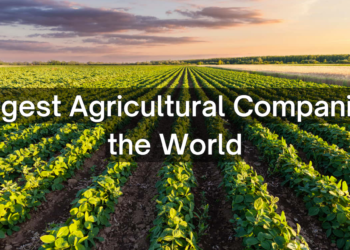Vertical farming and sustainable urban agriculture are two innovative approaches to meeting the increasing demand for fresh, locally sourced food while addressing the environmental challenges associated with traditional agriculture. In this article, we will explore the key concepts of vertical farming and sustainable urban agriculture, the benefits and challenges of these practices, and the latest innovations driving their growth.
What is Vertical Farming?
Vertical farming is a revolutionary agricultural practice that involves growing crops in vertically stacked layers, often in controlled environments. This approach utilises advanced technologies to optimise the growing conditions, including light, temperature, humidity, and nutrient levels. By doing so, it maximises crop yield in minimal space, making it an ideal solution for urban areas with limited land availability.

What is Sustainable Urban Agriculture?
Sustainable urban agriculture, on the other hand, encompasses a range of practices that focus on cultivating food within city limits while prioritising environmental sustainability. This can include community gardens, urban farming initiatives, rooftop gardens, and permaculture design principles. The primary aim is to make cities more self-sufficient when it comes to food production and reduce the environmental footprint associated with food transportation.
Why is Innovation Important in These Fields?
Innovation plays a crucial role in both vertical farming and sustainable urban agriculture for several reasons. First, these approaches address pressing issues such as food security, resource conservation, and reducing the environmental impact of agriculture. Innovation can lead to more efficient and effective solutions for these challenges.
Additionally, as the global population continues to urbanise, the need for sustainable food production practices in cities becomes increasingly evident. Innovations in these fields are essential to meet the growing demand for fresh and locally sourced produce while minimising the strain on resources.
Types of Vertical Farming
- Hydroponics: Hydroponic systems grow plants without soil, using nutrient-rich water solutions. This method is highly efficient in water usage and space and is suitable for a wide range of crops.
- Aeroponics: Aeroponic systems suspend plant roots in the air and deliver nutrients in a mist or fog. This approach minimises water usage and promotes faster growth.
- Aquaponics: Aquaponics combines fish farming with plant cultivation. Fish waste provides nutrients for the plants, while the plants purify the water for the fish. This symbiotic relationship creates a closed-loop system that conserves resources.
Benefits of Vertical Farming
Vertical farming offers numerous advantages, including:
 – Increased Crop Yield: By optimising growth conditions, vertical farming can produce more crops per square foot compared to traditional agriculture.
– Increased Crop Yield: By optimising growth conditions, vertical farming can produce more crops per square foot compared to traditional agriculture.
– Reduced Water Usage: Hydroponic and aeroponic systems use significantly less water compared to conventional farming, making them more sustainable in water-scarce regions.
– Reduced Land Use: Vertical farming requires minimal land, which helps protect natural habitats from agricultural expansion.
– Reduced Pesticide and Fertilizer Use: Controlled environments in vertical farming reduce the need for pesticides and fertilisers, leading to cleaner and healthier produce.
– Reduced Environmental Impact: The closed-loop systems of vertical farming help reduce pollution and environmental degradation associated with traditional agriculture.
Challenges of Vertical Farming
Despite its benefits, vertical farming faces some challenges:
– High Start-Up Costs: The initial investment in infrastructure and technology can be substantial, limiting access for smaller-scale growers.
– Energy-Intensive: Maintaining optimal conditions for vertical farming requires a significant amount of energy, which can be costly and have environmental implications.
– Not Suitable for All Crops: While many crops thrive in vertical farming environments, certain plants with extensive root systems or long growth cycles may not be well-suited.
Sustainable Urban Agriculture
What is it?
Sustainable urban agriculture encompasses a range of practices and initiatives that promote food production within city limits while focusing on sustainability and self-sufficiency.
Why is it Important?
– Reduced Food Miles: By growing food closer to where it’s consumed, sustainable urban agriculture reduces the distance food must travel, reducing carbon emissions associated with transportation.
– Greener Cities: Urban agriculture contributes to green spaces in cities, providing ecological benefits, aesthetic value, and improved urban microclimates.
– Improved Public Health: Access to fresh, locally grown produce can lead to healthier diets and improved public health outcomes.
– Increased Food Security: Local food production enhances a city’s resilience to external disruptions in the food supply chain.
Types of Sustainable Urban Agriculture
- Urban Farming: This involves cultivating crops or raising animals in city environments, often using vacant lots or underutilised urban spaces.
- Community Gardens: Community gardens are communal spaces where residents come together to grow their own food and share resources and knowledge.
- Rooftop Gardens: Rooftop gardens make efficient use of underutilised urban spaces, providing fresh produce while insulating buildings and reducing energy costs.
- Permaculture: Permaculture is a design approach that integrates agriculture with ecological principles, aiming for self-sustaining, regenerative systems.
Benefits of Sustainable Urban Agriculture
Sustainable urban agriculture offers a range of benefits:
– Increased Access to Fresh Produce: It provides residents with convenient access to fresh, nutritious produce.
– Reduced Food Miles: Locally sourced food reduces the environmental impact associated with long-distance transportation.
– Greener Cities: Urban agriculture contributes to urban green spaces, enhancing the city’s aesthetics and ecology.
– Improved Public Health: Access to fresh, locally grown food can lead to healthier diets and better health outcomes for city residents.
– Increased Food Security: Local food production enhances a city’s ability to withstand disruptions in the global food supply chain.
Challenges of Sustainable Urban Agriculture
– Lack of Space: In densely populated cities, finding available land for urban agriculture can be a significant challenge.
– Lack of Resources: Community-driven initiatives may lack funding, access to resources, and infrastructure support.
– Lack of Awareness: Many urban residents are unaware of the benefits and opportunities associated with sustainable urban agriculture.
Case Studies of Innovative Vertical Farms and Sustainable Urban Agriculture Projects
In recent years, a wave of innovative vertical farms and sustainable urban agriculture projects have emerged, revolutionising the way we think about food production in urban environments. These projects not only address the challenges of food security and sustainability but also serve as models for more efficient, eco-friendly, and locally sourced food systems. Here are a few remarkable case studies that exemplify the potential of these approaches:
AeroFarms (Newark, New Jersey, USA)
AeroFarms is a pioneering example of advanced vertical farming technology. This New Jersey-based vertical farm employs aeroponics to cultivate a variety of crops, including leafy greens, herbs, and tomatoes, all without the use of soil. The key highlight of AeroFarms is its remarkable resource efficiency. This indoor farm consumes a staggering 95% less water compared to traditional agriculture, significantly contributing to water conservation efforts. Moreover, AeroFarms produces an astonishing 390 times more food per square foot, making it one of the most productive and sustainable urban farming projects in the world.
BrightFarms (New York, New York, USA)
BrightFarms has established a network of indoor vertical farms located in urban areas, particularly in New York. These farms focus on growing fresh, high-quality leafy greens and herbs, supplying local grocery stores and restaurants. By positioning their farms near the point of consumption, BrightFarms reduces the need for long-distance transportation, thus minimising carbon emissions. BrightFarms also stands out for its exceptional water efficiency, utilising 90% less water than traditional agricultural methods.
Gotham Greens (Brooklyn, New York, USA)
Gotham Greens is another prominent player in the world of urban agriculture, with a network of indoor vertical farms strategically situated on rooftops and in repurposed warehouses in Brooklyn, New York. Their focus is on growing leafy greens and herbs, while simultaneously helping to rejuvenate urban neighbourhoods. Gotham Greens’ commitment to sustainability is evident through its 95% reduction in water use compared to conventional agriculture. These urban farms are contributing not only to food production but also to the revitalization of urban spaces.
Growing Underground (London, England)
London’s Growing Underground project takes a unique approach to sustainable urban agriculture by cultivating mushrooms in abandoned underground tunnels. Using an aquaponic system, this project establishes a symbiotic relationship between fish and plants, with fish waste providing essential nutrients for mushroom growth. What’s striking about Growing Underground is its commitment to eco-friendliness. The farm conserves 90% of water compared to traditional agriculture and refrains from using pesticides or herbicides, demonstrating a holistic approach to sustainability.
Lufa Farms (Montreal, Canada)
Lufa Farms, based in Montreal, Canada, has adopted rooftop agriculture to produce leafy greens, herbs, and tomatoes using hydroponic systems. What sets Lufa Farms apart is its dedication to reducing food waste and transportation emissions. By delivering its produce directly to customers within 24 hours of harvest, Lufa Farms not only ensures freshness but also minimises the environmental impact of food distribution.
These case studies represent just a glimpse of the myriad innovative vertical farms and sustainable urban agriculture projects emerging worldwide. These initiatives are at the forefront of addressing the challenges posed by the growing global population and the need for a more sustainable, locally sourced food supply. They serve as inspirations for urban areas seeking to enhance food security, promote environmental stewardship, and revitalise their communities through innovative agricultural practices. As these projects continue to thrive and evolve, they offer a promising path towards a more sustainable and food-secure future.
Innovations in Vertical Farming and Sustainable Urban Agriculture

- New Technologies for Vertical Farming: Advances in automation, data analytics, and artificial intelligence are making vertical farming more efficient and accessible. Controlled environment agriculture (CEA) systems have become more affordable and easier to manage, opening doors for more growers.
- New Crops Being Grown Vertically: Innovations are expanding the range of crops that can be grown vertically. Beyond leafy greens, growers are experimenting with fruits, herbs, and even root vegetables in vertical systems.
- New Ways to Reduce the Environmental Impact of Vertical Farming: Sustainable practices within vertical farming are gaining ground. For instance, more farms are embracing renewable energy sources and using recycled materials to reduce their carbon footprint.
- New Ways to Make Sustainable Urban Agriculture More Accessible and Affordable: Initiatives are focusing on addressing the challenges of space and resources in urban environments. Vertical and container farming systems are being designed to fit into smaller spaces, and community-supported agriculture (CSA) models are increasing access to fresh produce in urban areas.
- LED Lighting in Indoor Farming: LED lights offer energy efficiency, reduced heat production, and customizable light spectrums for optimized plant growth. They last longer and are eco-friendly, providing sustainability and cost savings to indoor farming operations.
- Robotics and Automation in Indoor Farming: Robotics and automation reduce labor costs, enhance precision, and enable continuous operation in indoor farming. They collect data, improve resource efficiency, and can be scaled to meet the needs of various farming operations, revolutionizing the industry.
Conclusion
Vertical farming and sustainable urban agriculture represent innovative solutions to the growing challenges of food security and environmental sustainability in our increasingly urbanized world. These practices are at the forefront of a global movement to revolutionize the way we produce and access food in cities.
Vertical farming, with its hydroponics and aeroponics systems, offers space-efficient, high-yield crop production, reducing resource consumption and environmental impact. In parallel, sustainable urban agriculture, including community gardens and rooftop farms, brings food production into city landscapes, fostering local food access and reducing transportation emissions. Ongoing innovations in both fields promise self-sufficient, resilient, and environmentally friendly urban environments, positively impacting our future.








